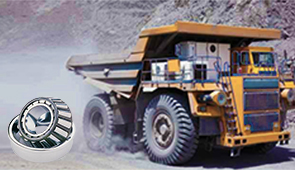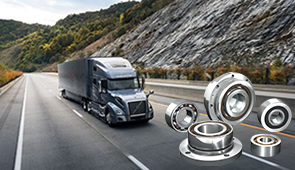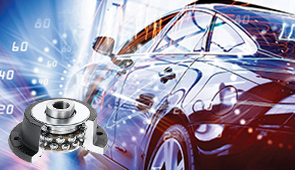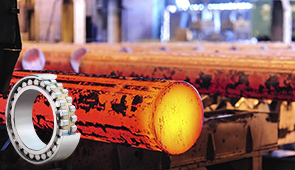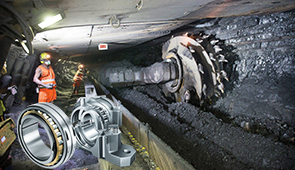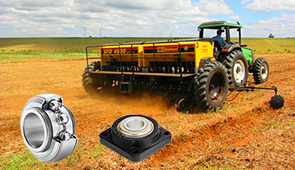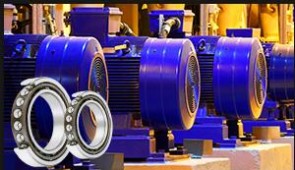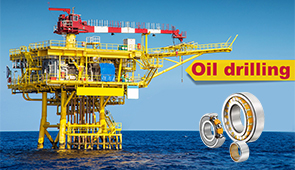Ultimate Guide to Seal Oil: Protecting Your Rotary Shafts from Leakage
Rotary shafts are integral to the performance and reliability of countless mechanical systems, ranging from industrial machinery to automotive engines. However, ensuring these components operate seamlessly over time requires meticulous attention to potential leakage and contamination issues. This guide provides a comprehensive overview of seal oil technology, exploring its critical role in maintaining system integrity, preventing fluid loss, and prolonging equipment lifespan. Whether you are an engineer, technician, or industry professional, this article will equip you with the knowledge necessary to understand the fundamentals of seal oil, identify common challenges in rotary shaft sealing, and implement best practices for effective leakage prevention.
How to choose the right oil seal for your application?
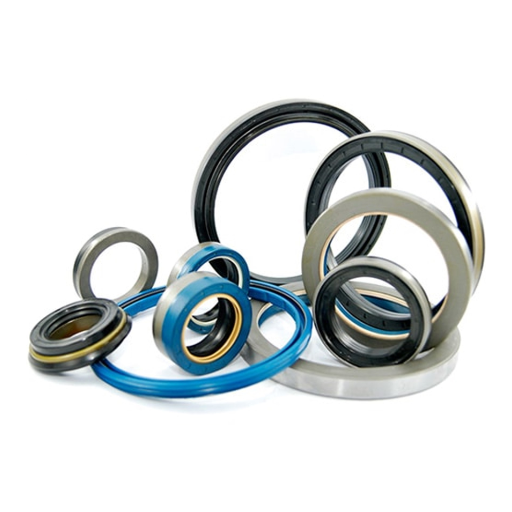
Factors to consider when selecting an oil seal
One of the primary factors that I consider is the operating temperature range within which the seal is expected to work. The sealant materials must be able to withstand the minimum and maximum temperature range without being compromised. For example, both Nitrile rubber (NBR) and Fluoroelastomer (FKM) materials are useable, the former from -40°F to 250°F, and the latter even exceeding 400°F.
Following this, I examine the shaft speed because higher speeds induce more friction and thus more heat. This can impede proper sealing functionality, causing seal failure. The majority of standard oil seals do well with continuous shaft speeds of around 5,000 surface feet per minute (SFM). However, high RPM applications often need custom-made pre-designed seals to replace the standard oil seals.
I also check the fluid that needs to be sealed to be certain of its compatibility with the sealant material to control a potential premature seal failure. For instance, petroleum-based oils can be used with NBR seal while FKM can withstand harsher chemicals and synthetic oils.
Lastly, there is a need to think about the fluid pressure within the same sealed container. Most oil seals can handle normal pressures up to +3 Psi, but I prefer using seals with a designated rating for high-pressure applications. I analyze the shaft and bore tolerances, surface finish, and contamination. The seal has to permit shaft diameters and any eccentric displacement while maintaining fit and leak-proofing in a loose clearance. For contaminated and abrasive environments, seals with other additional features such as dust lips are required.
By addressing these factors comprehensively, I can select an oil seal that ensures reliability and aligns with the demands of my specific application.
Sizing guide for metric oil seals
- Shaft Diameter: For a seal to be tight-fitting and effective, a shaft with a given diameter ought to have a corresponding inner diameter and also be able to rotate without leakage.
- Bore Diameter: The bore diameter has to fit in with the seal’s outer diameter to avoid displacement when the housing is used. A correct bore diameter also provides a lot of control during operation.
- Seal Width: Seal width plays an important role in determining how well it will fit the gap available in the application while making it function properly sealing-wise.
- Rotational Speed: Every shaft has a maximum speed threshold beyond which the heat generated can cause too much friction and therefore wear the seal out. This information is usually available in the specifications from the manufacturer.
- Pressure Rating: With a seal that is intended to go into a pressurized system, I make sure that the pressure rating needed for the application is achieved or that there is a higher limit than that.
- Temperature Range: I look into the temperature limits of the environment as well as the area of operation and choose the seal that can withstand these limits while remaining effective along durable.
By consulting technical data from the seal manufacturer, I can confidently ensure the oil seal matches the demands of the application while maintaining reliability and performance.
What are the common problems with oil seals?
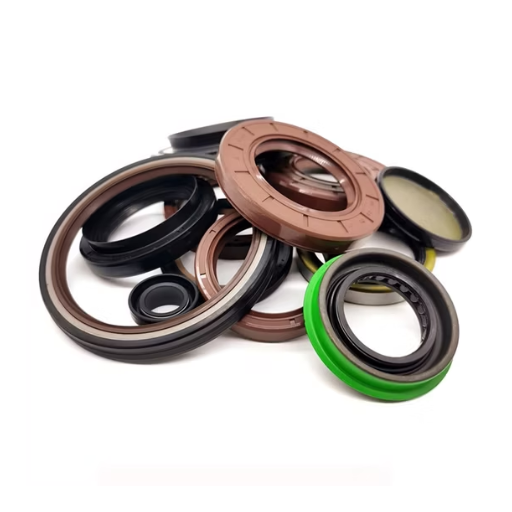
Identifying and preventing oil seal leakage
The leakage of oil seals is one of the most widespread problems that is a result of improper installation, seal incompatibility with the operating environment, and wear and tear. To leak detection, I would first examine the seal for destruction, wear, tears, and deformation. Examining the allied components for possible misalignment or over-shaft runout would also be carried out since these conditions may result in premature uncontrolled wear to the seal.
To avoid leakage, proper installation measures should be taken to nip this problem in the bud. Recommended tools, to prevent seal damage during installation, care should be taken to ensure the surface finish of the shaft is between 10 – 20 micro inches(Ra). In addition, the seal material should be appropriate for the operating temperature, pressure, and chemical environment. For instance:
- Temperature Range: Nitrile (NBR) seals have a temperature limit of 100°C (212°F) while Fluorocarbon (FKM) can withstand 200°C (391°F).
- Pressure Range: Standard oil seals can handle pressures of under 0.3 MPa, while high-pressure oil seals can sustain up to 3 MPa.
- Chemical Resistance: FKM is used for synthetic oils and aggressive chemicals while NBR is used for petroleum-based oils.
By correlating these technical features with those of the application at hand and regularly inspecting the seals during maintenance, I can mitigate the risks of leakage and prolong the overall service life of the system.
Dealing with wear and tear on rotary seals
In combating the wear and tear of rotary seals, I give particular consideration to a few important factors that ensure their performance and longevity. The very first factor is material choice since is it known that various materials have different levels of resistance to various abrasive elements, temperature extremes as well as chemicals. For high aggression and high-temperature environments (up to 200 °C), FKM works best, in contrast, for moderate temperatures (up to 120 °C) and petroleum oils, NBR performs well. Under these conditions, these materials are highly resistant to wear and tear.
Apart from this, effective lubrication practices must be employed to reduce friction and heat during operation. This means lubricants must be used that are compatible with seal material and operating conditions. For example, seals that expect to operate on exceedingly high speeds or longer service stretches need lubricants that are thermally stable and can retain viscosity.
Collar wear assessment through regular inspection and replacement schedules is also fundamental to mitigating wear. By measuring critical values such as surface finish roughness of the shaft which ordinarily is within 0.2 to 0.8 μm Ra, I can lower the chances of unreasonable wear. Misalignment of the shaft can, however, greatly contribute to material wear acceleration and potential leakage. This phenomenon happens due to excessive shaft roughness coupled with misalignment.
By following these steps, I can balance the efficiency and reliability of the system while extending the seals’ life as much as possible.
Troubleshooting seal failures in rotating shafts
To resolve rotating shaft seal failures, I start identifying root causes in a stepwise manner. First of all, the standard shaft and surface finish are checked. Ideally, the surface roughness should not exceed 0.2 to 0.8um Ra if a good seal is to be achieved. If it is outside the ideal range, there is bound to be excess abrasion or wear. I also check for axial and parallel alignment as well as concentric alignment. Even a slight misalignment of 0.05 mm runout can impose additional stress onto the seal which forces uneven contact with the seal and leads to rapid wear and failure.
Lastly, the temperature and pressure operating conditions need to be assessed. Most seals have operating upper and lower limits and for instance, working above 200 degrees Celsius or exceeding the seal pressure limit, say 0.5 MPa for standard radial lip seals, can destroy the material for the seal. Lubrication needs to be assessed too, as too little lubrication will lead to excessive heat and friction, while too much hydraulic lock or leakage might occur.
I examine the presence of contaminants, such as dirt and abrasive particles, that may destroy the sealing surface. The risk can be controlled by installing filtration with the required particle size rating, for example, 10 μm and smaller. At the same time, I check if the seal installation was done correctly and if proper care was taken during assembly to prevent damage, as well as make sure the environmental sealing conditions like ingress protection rating IP or equivalent are adequate for the application.
By taking these variables into account concerning the defined technical criteria, the probable reasons for the seal failures are found and solved efficiently.
How to properly install and maintain oil seals?
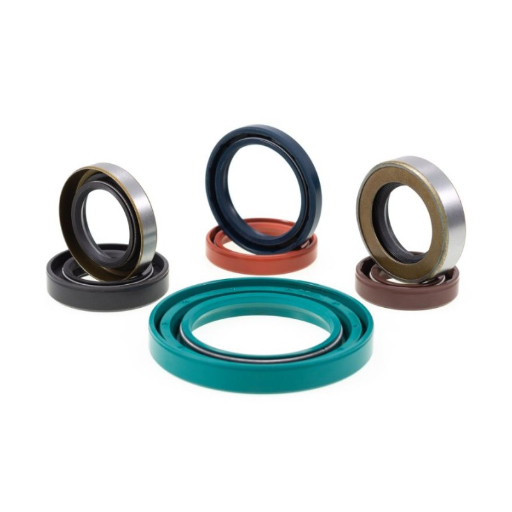
Best practices for oil seal maintenance
When it comes to the appropriate maintenance of oil seals, I ensure a systematic process is entailed which focuses on the cardinal technical requirements that determine the seal’s service life and performance. To begin with, I examine the sealing surface and the shaft for any signs of wear, roughness, or corrosion. To achieve full sealing, surface roughness of Ra 0.2 – 0.8 μm is deemed ideal to limit friction. Further, I also confirm that the shaft and bore sizes fall within the range stipulated by the manufacturer as any changes can result in poor seal performance or leaks.
Then, after confirming the previous step, I move on to the installation stage and apply a suitable oil or grease on the seal lips to prolong dry running and lower the rate of wear during the first phase of operation. The seal also needs to be placed properly on the critical sleeve, this includes using seal fitting tools to ensure the seal is neither deformed nor damaged. For use in dynamic applications, I make sure the seal material is suitable for the operating fluid, temperature, and other range – options such as NBR or FKM are used for -40° F to 250° F featuring fluids that consist of oil or chemicals.
Periodic checks are also critical during maintenance. I check for possible leaks, strange sounds, and signs of excessing operating pressure that can demonstrate failure. The surrounding area should also be cleaned periodically and checked to confirm that no contaminants are entering the seal system to make sure everything is working well. External vibrations and heat cycling are also recorded and reduced with dampers or insulation as needed.
Following these technical procedures and keeping cumulative records of evaluations allows me to reduce seal failure and enhance the life of the elements.
When to replace your oil seals
Oil seals have to be replaced when there are indications of wear and tear or oil seal failure. Signs of leakage, excessive wear, or drops in efficiency due to a malfunctioning seal, are good points for concern. Replacement is also justifiable when the seal exhibits hardening, cracking, and swelling, which are signs of chemical incompatibility or excessive temperature exposure.
- Operating Temperature Range: Assess whether the seal has been exposed to temperatures above or below the rated range and mark it down as significant. Leaving it running for too long outside this range will cause a material breakdown.
- Pressure Limits: Check if the seal is within the rated pressure, and ensure that the seal is working at the specified pressure. Higher-rated pressures can risk deformities orthe formation of stern extrusions.
- Chemical Compatibility: The material properties of the seal may get aggravated if incompatible fluids are introduced, therefore, confirming exposure to the chemicals in the seal’s operating environment is very important.
- Surface Finish of Shafts: Evaluate the roughness of the shaft surface (ideal is 10-20 μin Ra) and determine if it lies within the specified tolerance range for proper sealing. These deviations can increase the rate of wear or breaking of the seal.
- Seal Friction and Lubrication Condition: Repeatedly increasing friction along with insufficient lubrication would put too much strain on the parts which increases the chance of overheating due to diminished radiated energy and puts undue stress on the components along with extended wear of the components.
Keeping these factors in check and taking immediate measures upon detecting deterioration, will help save time on equipment servicing and will be achieved faster equipment performance.
What are the differences between oil seals and grease seals?
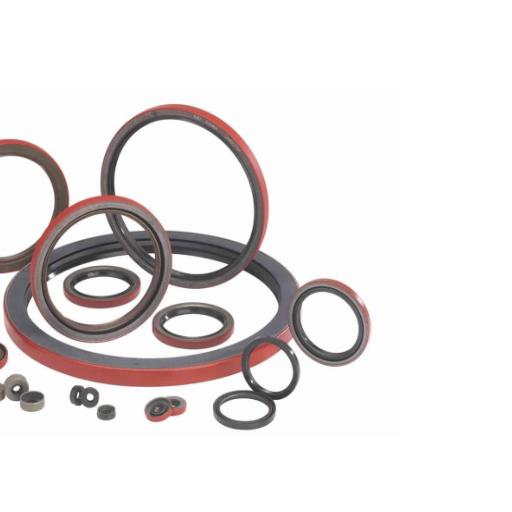
Oil seals vs. grease seals: Which to use?
Oil seals are made to contain oil lubricants and are used in places that operate at high speeds and temperatures. They are routinely employed in machines whose lubricants have to stay liquid on account of the friction and heat generated in processes like automobile engines or industrial gearboxes. Important factors to consider for oil seals are: The ability to work in temperatures ranging from -40°F to 400°F (-40°C to 204°C), compatibility with lubricants, and suitability to dynamic pressures.
Grease seals, on the other hand, can operate in the range of semi-solid lubricants, thus their application is preferred in low speeds and moderate temperature systems. These seals are very effective in wheel bearings or in some slower-rotating shafts that are lubricated with grease for extended periods. Grease seals have a typical operating temperature range of -30°F to 300°F (-34°C to 149°F) and they are also used because they can easily be contaminated by dust or dirt. After all, thick lubricant is used to protect the shafts.
I would apply oil seals for high-speed, extreme temperature tasks that require liquid lubrication, and I would apply grease seals for moderate systems with lower speed, mid-level temperature, and high contamination resitance. To meet the performance and longevity requirements, it’s essential to evaluate these technical specifications to pick the appropriate seal type.
Applications for oil seals and grease seals
These two types of seals serve the critical function of blocking the leakage of lubricants alongside preventing mechanical components from being contaminated. Their specific usage differs based on working conditions, type of lubrication, and system specifications.
Oil lubricants like engine oil, fluid, or gear oil are commonly used in various components of an automobile. Oil seals find application in automotive engines and gearboxes, crankshafts, hydraulic pumps, drives, and oil, and oil-lubricated bearings. Fluoroelastomer and silicone oil seals are used in high surface speed and temperature applications.
- Material Composition: Commonly made out of either nitrile rubber, fluorocarbon, or silicone, depending on the fluid and temperature involved.
- Temperature Range: Most materials retain the capability to withstand temperatures ranging from -40°F to 400°F.
- Surface Speed Limit: They’re meant for static applications or do not exceed 30 m/s (98 ft/s) in dynamic applications.
- Pressure Tolerance: Typically designed for a low range of pressure, up to 0.3 MPa (3 bar).
- Grease Seals: Grease seals are implemented in systems that employ semi-solid lubricants like greases.
They are good for low-speed applications with moderate temperature control, like in wheel hubs, industrial and agricultural machinery, and conveyor systems. Important technical characteristics of a grease seal consist of:
- Material Durability: Generally, It is produced from synthetic rubber or polyurethane that reliably endures foolproof sealing under average conditions.
- Temperature Range: Functionally guaranteed from -20°F to 250°F (-30°C to 120°C), depending on the type of grease and the sealing material.
- Surface Speed Limit: Normal limit is rated for speeds of less than 10 m/s (33 ft/s) since high speeds produce heat that deteriorates grease.
- Seal Design: It is greased and leakage-proof, constructed with semi-solid variable lip design grooves.
Having a case of those distinctions makes it possible to choose the right type of seals for mechanical systems best suited for them in the performance and wear of the components.
How do oil seals compare to other sealing solutions?
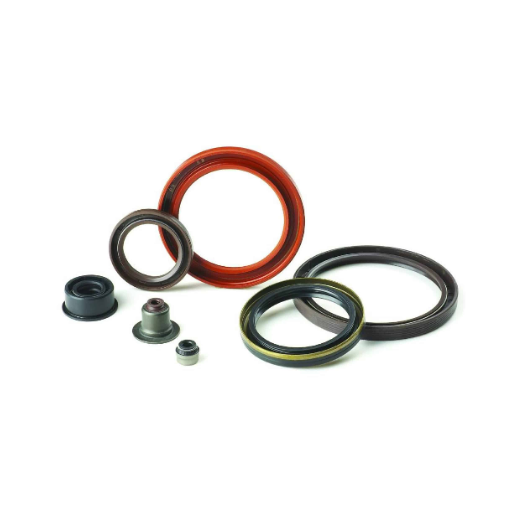
Oil seals vs. gaskets: Pros and cons
While evaluating the similarities and differences among oil seals and gaskets, one important feature stands out. Both oil seals and gaskets are sealing solutions, but their uses, designs, and functionalities vary greatly. In my opinion, oil seals are tailored for moving shafts since they are extremely efficient in preventing leakage of fluids or lubricants under dynamic conditions. Conversely, gaskets are tailored for fluid or gas sealing in two stationary surfaces and are efficient for static sealing applications.
- Oil Seals – Advantages and Disadvantages
Advantages:
- Dynamic Sealing: Best suited for static sealing of fluids, they create an active seal in the form of a barrier which prevents leakage.
- Range of Operating Temperature: Nitrile rubber and fluorocarbon oil seals can operate in -40°F to 300°F (-40°C to 150 °C).
- Pressure Limits: Due to the design of the oil seal lip, moderate pressure, usually up to 100psi, can be sustained.
- Simplicity for Maintenance: Does not require complete disassembly of the machinery, and can be done with relative ease.
Disadvantages:
- Specific Limitations: Can only be used for a certain degree of static systems.
Aside from the limitations mentioned, oil shafts should be secured in place to avoid distortion. Excess wearing is likely to occur above 30 m/s (100 ft/s).
- Gaskets – Pros and Cons
Pros:
- Static Sealing: best suited for non-moving applications like in flanged joints, where it provides a reliable seal for liquids, gas, or pressure sealing.
- Wide Material Choices: Capable of being manufactured from rubber, metal, or composites to suit specialized application temperature ranges between -90°F to 1000°F (-68°C to 538°C).
- Cost-Effective: In most cases inexpensive and offered in uniquely shaped designs to cater to specific engineering structures
Cons:
- Unsuitable for Dynamic Seals: Cannot withstand rotational or reciprocating motions that are present in dynamic movements.
- Pressure Limitations: To withstand higher pressure bolts may need to be used above 200 psi squeezing lying thrusting torque
From these characteristics, it is clear that the factor which determines the divide between oil seals and gaskets is the static or dynamic application in addition to other technical limitations such as temperature and pressure.
Comparing oil seals to mechanical seal
In comparing the oil seals and mechanical seals, the differences arise concerning their primary functions, range of use, and other technical specifications. Oil seals are used for the shaft of a rotary system where lubricant retention is crucial and contaminants must be excluded from the system. They are designed for operating pressures below psi 100. They also function with temperatures ranging from –40°F to 392°F (-40°C to 200°C), depending on the materials used. Oil seals are simple and inexpensive which makes them ideal for less harsh environments.
Unlike oil seals, mechanical seals are designed to cater to more demanding environments in which a dependable seal is claimed between rotary and non-moving parts like those in pumps or mixers. The construction materials like carbon, silicon carbide, tungsten carbide, etc., allow mechanical seals to handle higher pressures as high as psi 1,500 and wider temperature ranges from –100°F to 800°F (-73°C to 427°C). They are superior in sealing performance when the systems are dynamic or under high pressure yet they are more complicated and expensive than seal oil.
In conclusion, oil seals are best for static or low-pressure dynamic sealing applications. For higher pressure, temperature, and more dynamic systems, mechanical seals are the correct choice.
Frequently Asked Questions (FAQs)
Q: What are rubber seals primarily used for in rotary shaft applications?
A: Rubber seals are primarily used to prevent oil and grease leakage from rotary shafts. They create a barrier between the shaft and the surrounding environment, ensuring that lubricants stay inside the bearing or machinery while keeping contaminants out. This is crucial for maintaining the longevity and efficiency of rotating equipment.
Q: How does seal oil protect rotary shafts from leakage?
A: Seal oil is used to create a thin film between the sealing edge and the shaft surface. This film reduces friction, prevents wear, and helps maintain the integrity of the seal. The oil also acts as an additional barrier against contaminants and helps dissipate heat generated by the rotating shaft.
Q: What are the properties of a good seal oil for rotary shafts?
A: A good seal oil should have low viscosity for easy application, high thermal stability to withstand operating temperatures, and good compatibility with rubber materials like NBR (Nitrile Butadiene Rubber). It should also resist oxidation, have good lubricity, and maintain its properties over time to ensure long-lasting protection against leakage.
Q: Are there different types of rubber seals for various shaft sizes, such as 40 mm?
A: Yes, rubber seals are available in various sizes to fit different shaft diameters, including 40 mm. Manufacturers offer a range of sizes to accommodate different applications. When selecting a seal, it’s important to consider not only the shaft diameter but also the operating conditions, such as speed, temperature, and the fluid being sealed.
Q: What is the role of a metal case in some rotary shaft seals?
A: Metal cases in rotary shaft seals provide structural support and help maintain the seal’s shape under pressure. They also assist in heat dissipation and can improve the seal’s resistance to chemical exposure. Metal-cased seals are often used in more demanding applications where additional rigidity and protection are required.
Q: How do double-lip seals differ from single-lip seals in preventing leakage?
A: Double lip seals offer enhanced protection against leakage compared to single lip seals. The primary lip provides the main sealing function, while the secondary lip offers an additional barrier against contaminants from the air side. This dual-lip design is particularly effective in harsh environments or when dealing with more volatile fluids.
Q: Can seal oil be used to prevent vacuum leaks in rotary equipment?
A: Yes, seal oil can be used to prevent vacuum leaks in rotary equipment. In vacuum applications, the seal oil creates a liquid barrier that helps maintain the vacuum integrity. However, it’s crucial to select a seal oil with low vapor pressure to minimize evaporation and ensure effective sealing under vacuum conditions.
UCTH213-40J-300 with Setscrew(inch)
CNSORDERNO: Normal-duty(2)
TOGN: UCTH213-40J-300
SDI: B-R1/8
SD: 2 1/2
UCTH212-39J-300 with Setscrew(inch)
CNSORDERNO: Normal-duty(2)
TOGN: UCTH212-39J-300
SDI: B-R1/8
SD: 2 7/16
UCTH212-38J-300 with Setscrew(inch)
CNSORDERNO: Normal-duty(2)
TOGN: UCTH212-38J-300
SDI: B-R1/8
SD: 2 3/8
UCTH212-36J-300 with Setscrew(inch)
CNSORDERNO: Normal-duty(2)
TOGN: UCTH212-36J-300
SDI: B-R1/8
SD: 2 1/4
UCTH211-35J-300 with Setscrew(inch)
CNSORDERNO: Normal-duty(2)
TOGN: UCTH211-35J-300
SDI: B-R1/8
SD: 2 3/16
UCTH211-34J-300 with Setscrew(inch)
CNSORDERNO: Normal-duty(2)
TOGN: UCTH211-34J-300
SDI: B-R1/8
SD: 2 1/8









